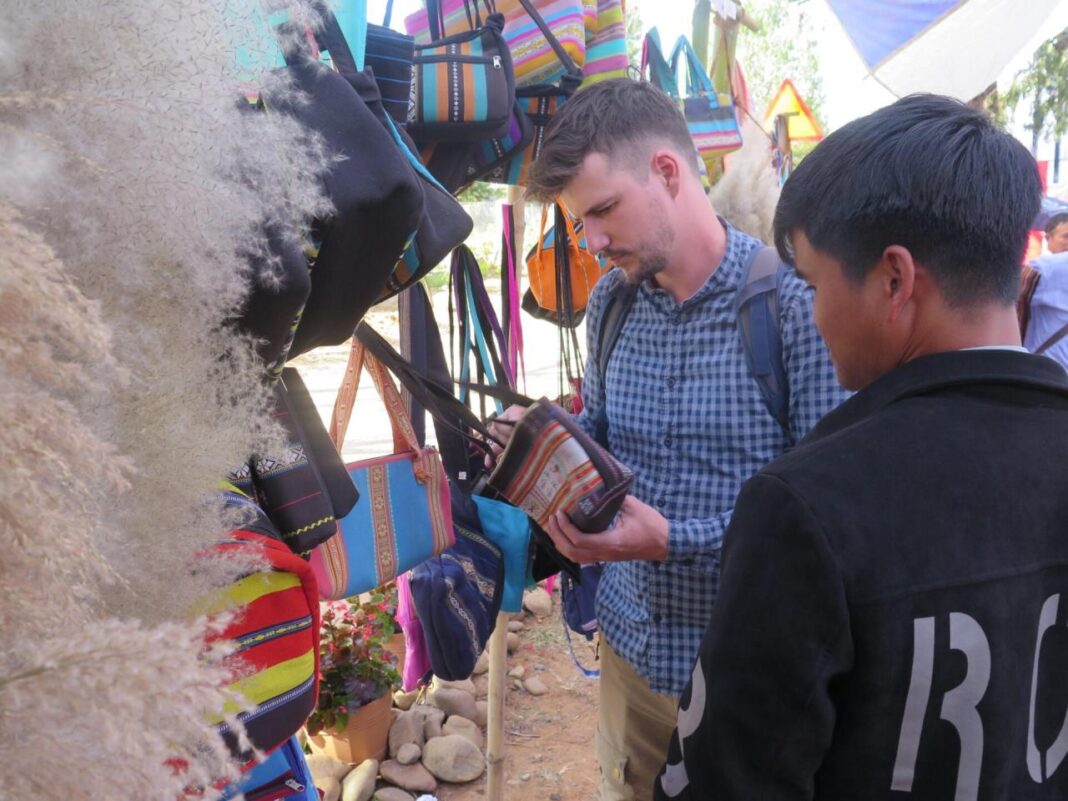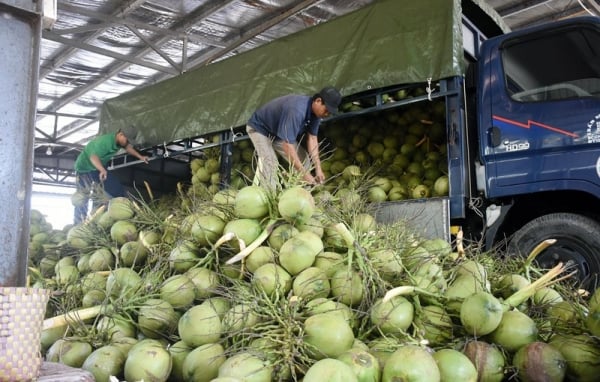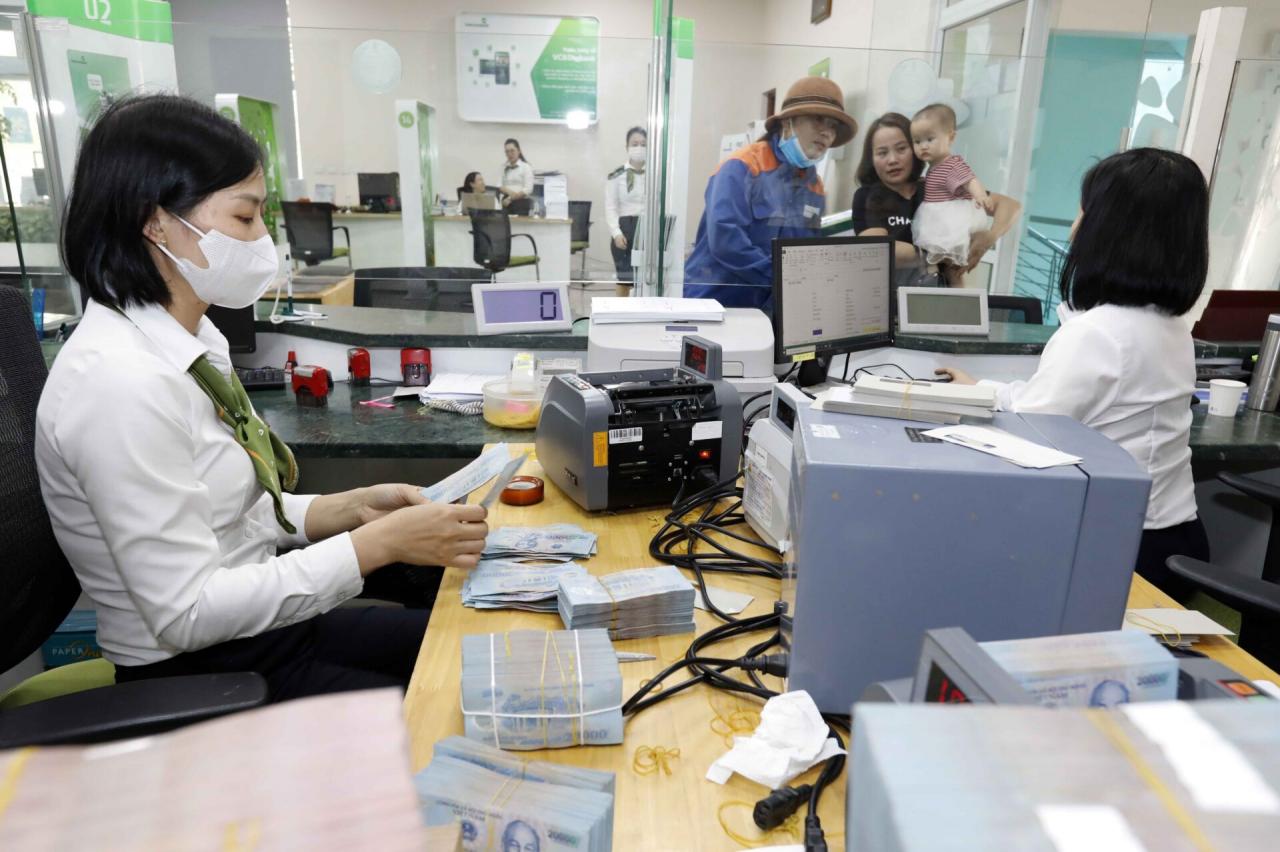2023 is a difficult year for the Vietnamese economy due to the decline in global economic growth, the consequences of the COVID-19 pandemic and the Russia-Ukraine military conflict, which have adversely affected most economic sectors. However, in the second year of applying the multidimensional poverty standard for the 2022-2025 period, Vietnam has achieved encouraging results in implementing the National Target Program on Sustainable Poverty Reduction.

Polish tourists enjoy brocade products of the Bahnar people in Kon Tum. Photo: Du Toan - VNA
Impressive numbers
According to the latest report of the Government on the implementation of the National Target Program on Sustainable Poverty Reduction, in 2023, the poverty rate according to the multidimensional poverty standard continued to decrease from 4.3% in 2022 to about 2.93%, while the poverty rate in poor districts also decreased from 38.62% last year to 33%. The poverty rate of ethnic minority households also decreased from 21.02% in 2022 to about 17.82%, meeting the target assigned by the National Assembly and the Government, while the poverty rate in 74 poor districts decreased from 4% to 5%.
Previously, in 2022 - the first year of applying the multidimensional poverty standard, the multidimensional poverty rate also decreased by 0.1 percentage points compared to 2021 and decreased by an average of 0.81 percentage points in the period 2016-2022, while the ethnic minority poverty rate also decreased by 4.89% compared to 2021, reaching the target set in Decision No. 90/QD-TTg, and the poverty rate in 74 poor districts decreased by 6.35%, reaching the target assigned by the National Assembly and the Government (4%).
According to the Government's estimates, by the end of 2023, nine more communes will escape the status of extremely disadvantaged communes in coastal and island areas, including: Ngu Thuy Bac commune (Le Thuy district, Quang Binh province); Hai An and Hai Khe communes (Hai Lang district, Quang Tri province); Phong Chuong and Dien Huong communes (Phong Dien district, Thua Thien - Hue province); Giang Hai commune (Phu Loc district, Thua Thien - Hue province); Phu Gia and Phu Dien communes (Phu Vang district, Thua Thien - Hue province); Phuoc Vinh Dong commune (Can Giuoc district, Long An province). This will contribute to achieving the criteria for recognition of completing the goal of building new rural areas for 10/54 communes in particularly difficult areas in coastal and island areas, reaching about 18.5% compared to the target assigned by the National Assembly, the Government and the Prime Minister that by 2025, 30% of poor districts and 30% of particularly difficult communes in coastal and island areas will escape poverty and extreme difficulty.
Resolute poverty reduction
To achieve the above results, according to the Government's assessment, documents guiding the implementation of the program and resolving recommendations, difficulties and problems of localities have basically been issued in full and timely manner, creating a legal framework for ministries, branches and localities to implement the Program.

Many farming households have been proactive in making efforts to escape poverty. Illustrative photo: VNA
In addition, the central budget capital for 2023 to serve the implementation of the Program has been fully allocated by competent authorities to ministries, branches and localities. The results of the implementation of the sustainable poverty reduction target meet the requirements assigned by the National Assembly and the Government. Initially, people have been aware of proactively striving to escape poverty, proactively organizing production, livestock and crop activities, creating livelihoods and stable income.
However, the Government also pointed out shortcomings and limitations in the implementation of the National Target Program on Sustainable Poverty Reduction, such as the delay in issuing a Circular amending and supplementing Circular No. 46/2022/TT-BTC of the Minister of Finance; no guidance on low-income workers to support vocational training; no guidance on considering support for investment in facilities, purchasing equipment and training means for vocational education and continuing education centers in poor districts.
Furthermore, according to the report, housing for poor and near-poor households in poor districts that have received support from other programs and projects before 2021 has now been degraded and seriously damaged but has not been considered for support from the National Target Program on Sustainable Poverty Reduction for the 2021-2025 period.
On the other hand, the slow issuance of guiding documents and capital allocation in 2023 has affected the implementation of the Program, especially the low disbursement rate, leading to an incomplete assessment of the results of the Program's implementation in 2023. Meanwhile, the coordination between ministries, central agencies and localities is not close, the responsibility for proposing and developing implementation plans is not high, and there is a lack of initiative, leading to delays in issuing documents, proposing and allocating capital to implement the Program. Some ministries, branches and localities report slowly, the data is not accurate; many socialized resources have not been mobilized. Some projects are still slow, fragmented and spread out.
Furthermore, the number of officials working on poverty reduction from central to local levels has not met the requirements in terms of quantity, and they hold multiple jobs and frequently change positions. A small number of them are afraid of responsibility, shirk their duties and avoid doing their work, affecting their expertise and work progress.
In addition, the application of information technology in directing, operating, and managing the implementation of the Program is still limited, leading to slow synthesis and reporting, and lack of timely data synthesis as a basis for making adjustment decisions; and the data management system on poverty reduction has not been completed.
Although communication work has been invested in resources and mobilized the participation of the entire political system, there are still some places where the implementation is not really effective, formalistic or the communication is not close to the target audience, not suitable to the conditions and characteristics of the region.
Based on the above assessment, from now until the end of the year, the Government and the Prime Minister plan to continue to direct and urge ministries, central and local agencies to continue to thoroughly grasp and propagate to raise awareness of sustainable poverty reduction. Strengthen propaganda and education, raise awareness and responsibility of cadres and party members in poverty reduction work; communicate, guide and support people to actively participate in labor and production, proactively rise up to escape poverty and escape poverty sustainably, not waiting for or relying on the help of the State and society; focus on communicating about effective poverty reduction initiatives and models and typical examples of rising up to escape poverty.
The Government coordinates with the Central Committee of the Vietnam Fatherland Front to innovate, promote and improve the quality of the emulation movement "For the poor - leaving no one behind" in 2023, arousing the will of self-reliance, self-reliance, promoting the internal strength to "escape poverty, build a prosperous life" of the people and the community, striving "For a Vietnam without hunger and poverty".
Another task set by the Government is to perfect the mechanism and policies for sustainable poverty reduction. The Prime Minister directed the Ministry of Planning and Investment to synthesize difficulties and recommendations on policies and laws in the implementation of the Program to advise and coordinate with relevant ministries and branches to advise and propose solutions to competent authorities for consideration and resolution according to decentralization.
The Ministry of Labor, War Invalids and Social Affairs submits to competent authorities for guidance on a number of contents on developing vocational education in poor and disadvantaged areas; announces the results of the 2023 poverty household review; completes the connection of poverty reduction data with national population data.
The Government and the Prime Minister direct localities to urgently and resolutely review and complete the issuance of guiding documents under their authority as prescribed in Decree No. 38/2023/ND-CP (amending and supplementing a number of articles of Decree No. 27/2022/ND-CP stipulating the management mechanism and organization of the implementation of national target programs), while focusing on leadership, direction, assignment, decentralization, and clearly defining the responsibilities of all levels, sectors, organizations, and individuals, especially the responsibilities of leaders in implementing poverty reduction and implementing the Program.
Ministries, branches and localities shall organize the implementation with quality and efficiency, ensuring the progress of projects and sub-projects under the Program, regular poverty reduction policies, and social policy credit to support poverty reduction; Improve and enhance the quality of cadres, civil servants and officials working on poverty reduction at all levels to have the capacity to carry out assigned tasks; Strengthen inspection, supervision and monitoring, promptly rectify and handle violations in the process of organizing and implementing the Program./.
Kim Khuyen


























































Comment (0)